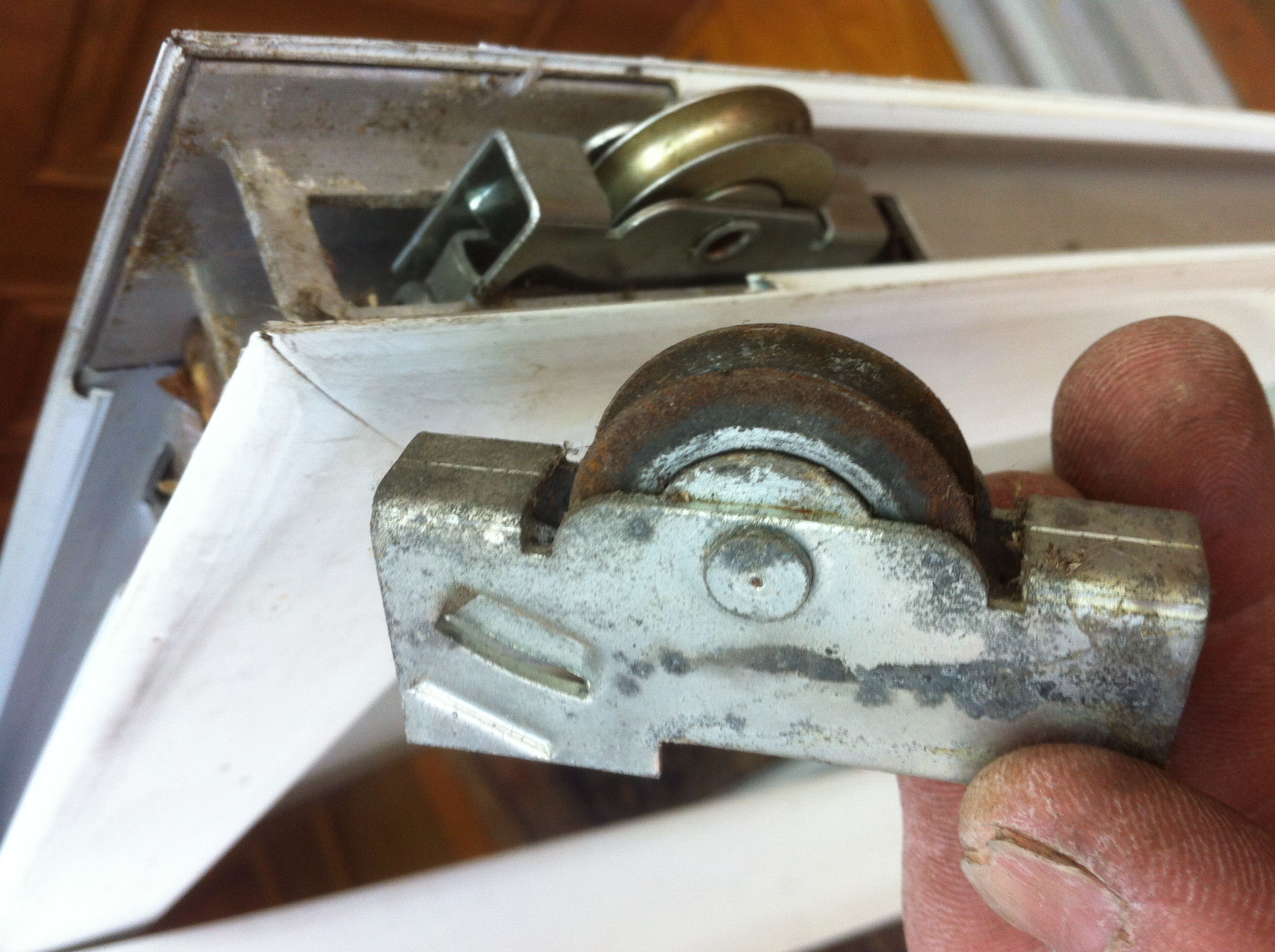Introduction: A Saga of Unlocked Sliding Doors
In the realm of residential security, sliding doors stand as steadfast guardians, ensuring the safety and privacy of our homes. Yet, their smooth functionality rests upon the integrity of their locking mechanisms. When these intricate contraptions malfunction, leaving doors vulnerable and the peace of our minds shattered, it’s imperative that we possess the knowledge and skills to restore their vital function. This comprehensive guide will equip you with the expertise to troubleshoot, repair, and maintain sliding door lock mechanisms, empowering you to safeguard your home and reclaim your sense of tranquility.

Image: www.kerkenregister.com
Embarking on the Repair Journey: Unraveling the Complexity
Sliding door lock mechanisms, while seemingly straightforward, encompass a symphony of interconnected components that orchestrate the smooth operation of locking and unlocking. Understanding their inner workings is paramount for successful repairs. The typical mechanism comprises a hook bolt that engages with a strike plate on the doorframe, a thumb latch that controls the hook’s movement, and a locking cylinder that activates the mechanism with a key or thumb turn. When any of these components fail to cooperate, the door’s security is compromised, and a frustrating ordeal ensues.
Troubleshooting: Diagnosing the Culprit
Before embarking on repairs, it’s crucial to accurately diagnose the cause of the malfunctioning lock. Begin by examining the strike plate alignment. Misalignments can obstruct the hook bolt’s entry, preventing the door from locking. Next, investigate the thumb latch’s operation. If the latch fails to move freely or remains stuck, it may require adjustment or replacement. Finally, attempt to turn the key or thumb turn. Any resistance or jamming indicates potential issues with the locking cylinder.
Tools of the Trade: Essential Elements for Success
To tackle sliding door lock repairs effectively, gather a modest toolkit that includes:
- Phillips and flathead screwdrivers
- Allen wrenches (hex keys)
- Adjustable wrench or pliers
- Lubricating oil
- Replacement lock components (optional)

Image: www.homedepot.com
Step-by-Step Repair Instructions: Reclaiming Control
Once you’ve determined the root of the problem, proceed with the appropriate repair steps:
-
Adjusting Strike Plate Alignment: Using an Allen wrench or screwdriver, loosen the screws securing the strike plate. Shift it slightly until the hook bolt engages smoothly, then tighten the screws to fix it in place.
-
Repairing Thumb Latch Issues: Remove the screws holding the thumb latch in position. Carefully adjust the latch to ensure free movement and proper engagement with the strike plate. Reattach the latch securely.
-
Replacing Locking Cylinder: Replace the locking cylinder only if other repair measures prove futile. Disassemble the lock following the manufacturer’s instructions, removing the old cylinder and inserting the new one.
Maintenance Marvels: Prolonging Lock Longevity
Like all mechanical systems, sliding door lock mechanisms benefit from routine maintenance to ensure their continued smooth operation and longevity:
-
Lubrication: Apply lubricating oil to moving parts, such as the latch and hook bolt, to reduce friction and wear.
-
Regular Inspections: Periodically inspect the lock for signs of misalignment, wear, or damage. Promptly address any issues to prevent minor problems from escalating into major repairs.
-
Cleaning: Periodically clean the lock with a damp cloth to remove dirt and debris that can accumulate and impede functionality.
How To Fix Sliding Door Lock Mechanism
Conclusion: Triumph Over Sliding Door Lock Mishaps
By following these comprehensive instructions, you can transform from an anxious homeowner to a confident master of sliding door lock repairs. Remember, these mechanisms are not designed to be impenetrable fortresses but rather guardians of your peace of mind. With regular maintenance and timely repairs, your sliding doors will continue to glide effortlessly, reassuring you that your home remains a haven of security and tranquility.